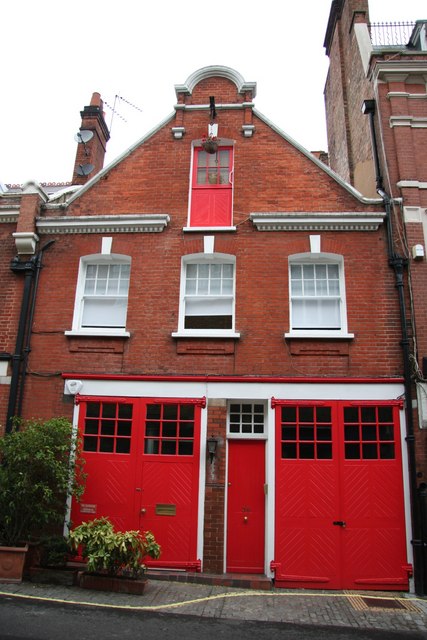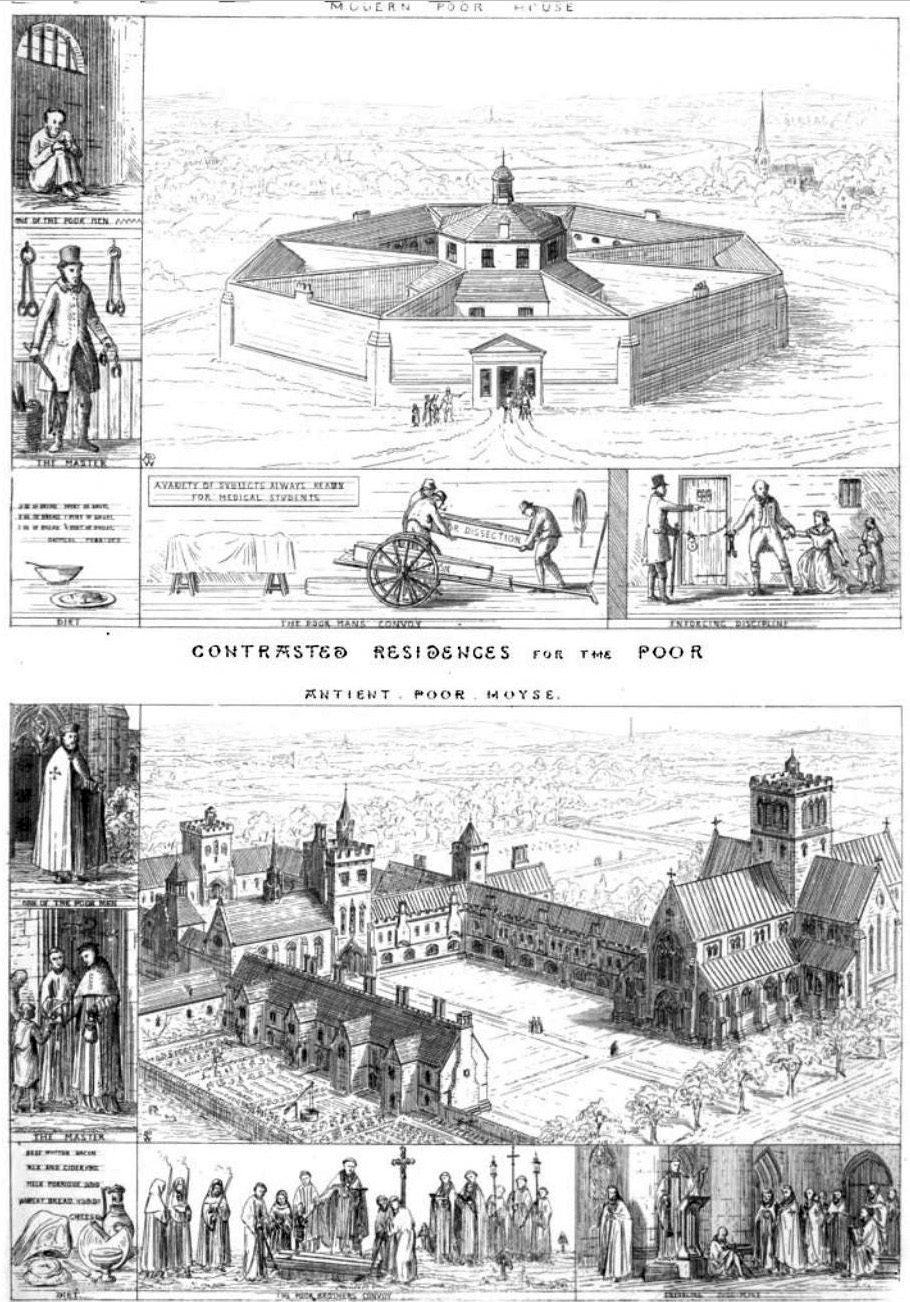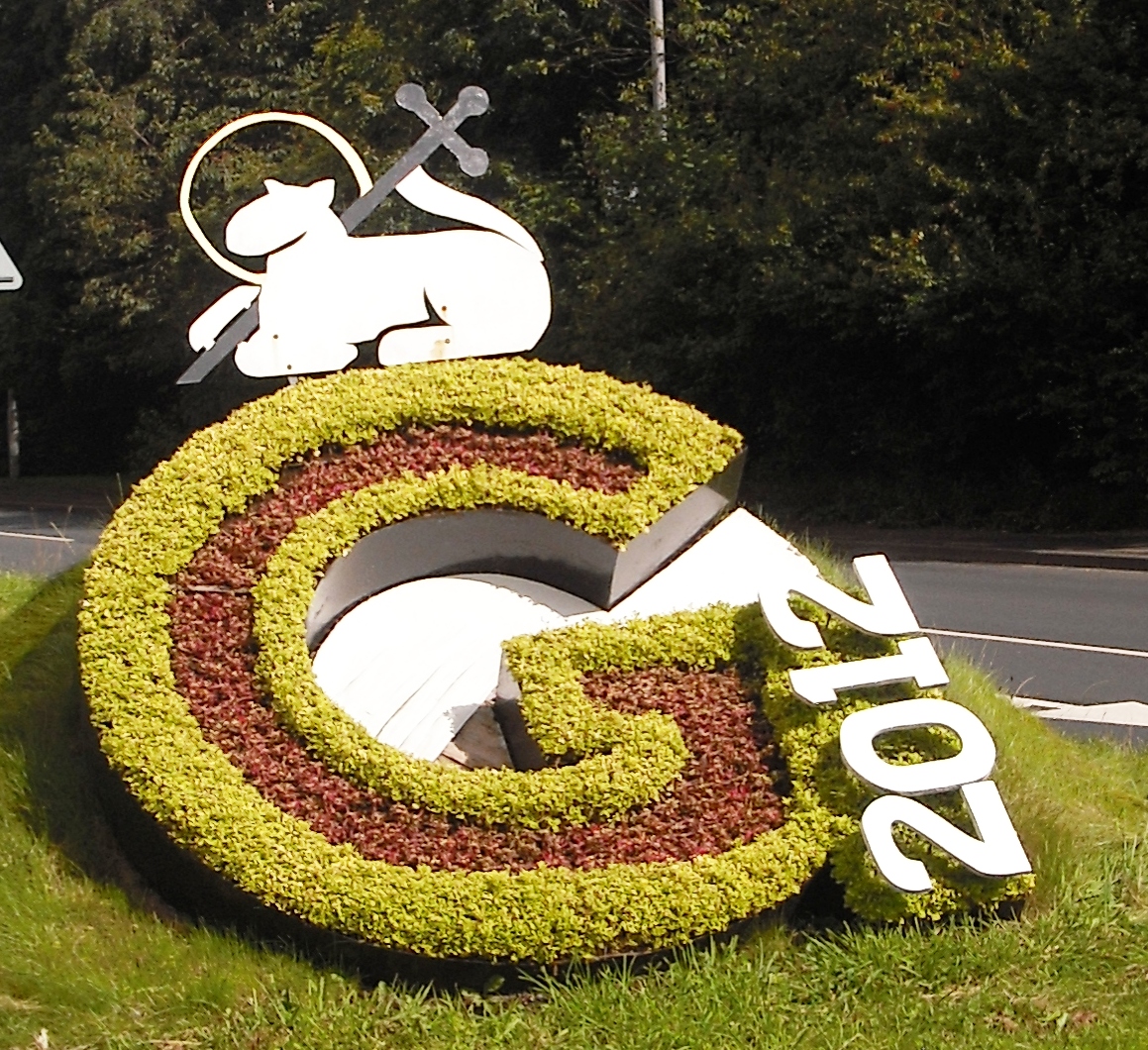|
Immaculate Conception Church, Farm Street
The Church of the Immaculate Conception, Farm Street, also known as Farm Street Church, is a Catholic parish church run by the Society of Jesus in Mayfair, Central London, England. Its main entrance is in Farm Street, though it can also be accessed from the adjacent Mount Street Gardens. Sir Simon Jenkins, in his book ''England's Thousand Best Churches'', describes the church as "Gothic Revival at its most sumptuous". History Foundation In the 1840s, when the Jesuits first began looking for a location for their London church, they found the site in the mews of a back street. The name 'Farm Street' derives from 'Hay Hill Farm' which, in the eighteenth century, extended from Hill Street eastward beyond Berkeley Square.''History''Farm Street siteRetrieved 22 January 2013 In 1843, Pope Gregory XVI received a petition from English Catholics for permission to erect a Jesuit Church in London and plans were accepted.''160 Years of Farm Street''Thinking FaithRetrieved 23 January 2013 ... [...More Info...] [...Related Items...] OR: [Wikipedia] [Google] [Baidu] |
Mayfair
Mayfair is an area of Westminster, London, England, in the City of Westminster. It is in Central London and part of the West End. It is between Oxford Street, Regent Street, Piccadilly and Park Lane and one of the most expensive districts in the world. The area was originally part of the manor of Eia and remained largely rural until the early 18th century. It became well known for the annual May Fair that took place from 1686 to 1764 in what is now Shepherd Market. Over the years, the fair grew increasingly downmarket and unpleasant, and it became a public nuisance. The Grosvenor family (who became Dukes of Westminster) acquired the land through marriage and began to develop it under the direction of Thomas Barlow. The work included Hanover Square, Berkeley Square and Grosvenor Square, which were surrounded by high-quality houses, and St George's Hanover Square Church. By the end of the 18th century, most of Mayfair had been rebuilt with high-value housing for the ... [...More Info...] [...Related Items...] OR: [Wikipedia] [Google] [Baidu] |
Mews
A mews is a row or courtyard of stables and carriage houses with living quarters above them, built behind large city houses before motor vehicles replaced horses in the early twentieth century. Mews are usually located in desirable residential areas, having been built to cater for the horses, coachmen and stable-servants of prosperous residents. The word mews comes from the Royal Mews in London, England, a set of royal stables built 500 years ago on a former royal hawk mews. The term is now commonly used in English-speaking countries for city housing of a similar design. After the Second World War, mews were replaced by alleys and the carriage houses by garages for automobiles. Hawk mews ''Mews'' derives from the French , 'to moult', reflecting its original function to confine a hawk to a mews while it moulted.''Oxford English Dictionary'' online, accessed 17 February 2019 William Shakespeare deploys ''to mew up'' to mean confine, coop up, or shut up in ''The Taming of the S ... [...More Info...] [...Related Items...] OR: [Wikipedia] [Google] [Baidu] |
Prayer For The Dead
Religions with the belief in a final judgment, a resurrection of the dead or an intermediate state (such as Hades or purgatory) often offer prayers on behalf of the dead to God. Buddhism For most funerals that follow the tradition of Chinese Buddhism, common practices include chanting the name of Amitabha, or reciting Buddhist scriptures such as the Sutra of The Great Vows of Ksitigarbha Bodhisattva, Amitabha Sutra, Diamond Sutra or a combination of classic Buddhist scriptures, such as the Great Compassion Mantra, the Heart Sutra, the Amitabha Pure Land Rebirth Mantra and Sapta Atitabuddha Karasaniya Dharani (or ''Qi Fo Mie Zui Zhen Yan'' 七佛滅罪真言). Other practices include Ritsu offer refuge, Pure Land Buddhists nianfo or chant Pure Land Rebirth Dhāraṇī and Tibetan Buddhists chant Om mani padme hum repeatedly. Prayers such as Namo Ratnasikhin Tathagata are for animals. Christianity New Testament A passage in the New Testament which is seen by some to b ... [...More Info...] [...Related Items...] OR: [Wikipedia] [Google] [Baidu] |
Augustus Pugin
Augustus Welby Northmore Pugin ( ; 1 March 1812 – 14 September 1852) was an English architect, designer, artist and critic with French and Swiss origins. He is principally remembered for his pioneering role in the Gothic Revival architecture, Gothic Revival style of architecture. His work culminated in designing the interior of the Palace of Westminster in Westminster, London, and its clock tower, the Elizabeth Tower (formerly St. Stephen's Tower), which houses the bell known as Big Ben. Pugin designed many churches in England, and some in Ireland and Australia. He was the son of Augustus Charles Pugin, Auguste Pugin, and the father of E. W. Pugin, Edward Welby Pugin, Cuthbert Welby Pugin, and Peter Paul Pugin, who continued his architectural and interior design firm as Pugin & Pugin. Biography Pugin was the son of the French draughtsman Augustus Charles Pugin, Auguste Pugin, who had immigrated to England as a result of the French Revolution and had married Catherine Welb ... [...More Info...] [...Related Items...] OR: [Wikipedia] [Google] [Baidu] |
Beauvais Cathedral
Beauvais Cathedral otherwise the Cathedral of Saint Peter of Beauvais () is a Catholic church in the northern town of Beauvais, Oise, France. It is the seat of the Bishop of Beauvais, Noyon and Senlis. The cathedral is in the High Gothic style, and consists of a 13th-century choir, with an apse and seven polygonal apsidal chapels reached by an ambulatory, joined to a 16th-century transept. It has the highest Gothic choir in the world: under vault. From 1569 to 1573 the cathedral of Beauvais was, with its tower of , the highest human construction of the world. Its designers had the ambition to make it the largest gothic cathedral in France ahead of Amiens. Victim of two collapses, one in the 13th century, the other in the 16th century, it remains unfinished today; only the choir and the transept have been built. The planned nave of the cathedral was never constructed. The remnant of the previous 10th-century Romanesque cathedral, known as the '' Basse Œuvre'' ("Lower Work"), ... [...More Info...] [...Related Items...] OR: [Wikipedia] [Google] [Baidu] |
Decorated Gothic
English Gothic is an architectural style that flourished from the late 12th until the mid-17th century. The style was most prominently used in the construction of cathedrals and churches. Gothic architecture's defining features are pointed arches, rib vaults, buttresses, and extensive use of stained glass. Combined, these features allowed the creation of buildings of unprecedented height and grandeur, filled with light from large stained glass windows. Important examples include Westminster Abbey, Canterbury Cathedral and Salisbury Cathedral. The Gothic style endured in England much longer than in Continental Europe. The Gothic style was introduced from France, where the various elements had first been used together within a single building at the choir of the Abbey of Saint-Denis north of Paris, completed in 1144. The earliest large-scale applications of Gothic architecture in England were Canterbury Cathedral and Westminster Abbey. Many features of Gothic architecture had e ... [...More Info...] [...Related Items...] OR: [Wikipedia] [Google] [Baidu] |
Ignatius Of Loyola
Ignatius of Loyola ( ; ; ; ; born Íñigo López de Oñaz y Loyola; – 31 July 1556), venerated as Saint Ignatius of Loyola, was a Basque Spaniard Catholic priest and theologian, who, with six companions, founded the religious order of the Society of Jesus (Jesuits), and became its first Superior General, in Paris in 1541. Ignatius envisioned the purpose of the Society of Jesus to be missionary work and teaching. In addition to the vows of chastity, obedience and poverty of other religious orders in the church, Loyola instituted a fourth vow for Jesuits of obedience to the Pope, to engage in projects ordained by the pontiff. Jesuits were instrumental in leading the Counter-Reformation. As a former soldier, Ignatius paid particular attention to the spiritual formation of his recruits and recorded his method in the '' Spiritual Exercises'' (1548). In time, the method has become known as Ignatian spirituality. He was beatified in 1609 and was canonized as a saint on 12 M ... [...More Info...] [...Related Items...] OR: [Wikipedia] [Google] [Baidu] |
St Wilfrid's Church, Preston
Saint Wilfrid's Church is a Roman Catholic Church (building), church run by the Society of Jesus, in the city centre of Preston, Lancashire, Preston, Lancashire, England. It was built in 1793 and is situated between Fishergate and Winckley Square on Chapel Street. Dedication The church is dedicated to Wilfrid (c.633–c.709), an English bishop and saint. He founded a monastic community in Ripon Minster, Ripon and was Archbishop of York, Bishop of Northumbria from 664–668 and 714–732. Saint Wilfrid must have had a particular devotion in Preston, because the original parish church, the present-day St John's Minster, Preston, St. John's Minster, was originally called St Wilfrid's. However, it changed its dedication to St. John the Baptist in 1581, and again to St. John the Evangelist in 1770, meaning that when St. Wilfrid's church was built in 1793, there was no confusion between the two. History Founding The first post-reformation Catholic church in Preston was established by ... [...More Info...] [...Related Items...] OR: [Wikipedia] [Google] [Baidu] |
Ignatius Scoles
Ignatius Scoles SJ (1 December 1834 – 15 July 1896) was a Roman Catholic Jesuit priest, architect and writer. He designed churches and civic buildings and was the son of Joseph John Scoles.Guyana Times International' accessed 26 March 2013 Early life He was born in Hammersmith in London. His father was the noted architect Joseph John Scoles, who was working on St Ignatius Church in Preston, Lancashire when Ignatius was born. His father did a lot of work for the Society of Jesus and named his eldest son after Ignatius of Loyola the founder of the Jesuits. His brother Alexander Joseph Cory Scoles followed him in becoming a priest, but not a Jesuit, instead he joined the Diocese of Clifton, later becoming a canon. He was also an architect and designed many churches in the south of England such as St Francis of Assisi Church in Birmingham and Our Lady of Loreto and St Winefride's Church in London.Slevin, Malachy, ''St Francis Church Handsworth'' (Birmingham, 1994) pp.1–17 His ... [...More Info...] [...Related Items...] OR: [Wikipedia] [Google] [Baidu] |
Preston, Lancashire
Preston () is a city on the north bank of the River Ribble in Lancashire, England. The city is the administrative centre of the county of Lancashire and the wider City of Preston, Lancashire, City of Preston local government district. Preston and its surrounding district obtained City status in the United Kingdom, city status in 2002, becoming England's 50th city in the 50th year of Elizabeth II of the United Kingdom, Queen Elizabeth II's reign. Preston had a population of 147,800 at the 2021 census, the City of Preston district 156,411 in 2023 and the Preston Built-up Area 313,322. The Preston Travel To Work Area, in 2011, had a population of 420,661, compared with 354,000 in the previous census. The south bank of the Ribble is part of the Preston urban area, although it forms the South Ribble borough that is administratively separate. Preston and its surrounding area have provided evidence of ancient Roman Britain, Roman activity, largely in the form of a Roman road that led ... [...More Info...] [...Related Items...] OR: [Wikipedia] [Google] [Baidu] |
St Ignatius Church, Preston
The Syro-Malabar Cathedral of St Alphonsa is a Syro-Malabar Church, Catholic Church (building), cathedral of the Syro-Malabar Catholic Church, Syro-Malabar rite in Preston, Lancashire, Preston, Lancashire. It is the cathedral of the Syro-Malabar Catholic Eparchy of Great Britain, and was previously St Ignatius Church under the Diocese of Lancaster. It is situated close to the Preston city centre, with the entrance on Meadow Street. The building was opened in 1836 and was the first church in Preston to have a spire.Preston from British History Online, Retrieved 28 February 2013 Since January 2015, the church has been used as a cathedral for the Syro-Malabar Catholic Church. [...More Info...] [...Related Items...] OR: [Wikipedia] [Google] [Baidu] |
Liverpool
Liverpool is a port City status in the United Kingdom, city and metropolitan borough in Merseyside, England. It is situated on the eastern side of the River Mersey, Mersey Estuary, near the Irish Sea, north-west of London. With a population of (in ), Liverpool is the administrative, cultural and economic centre of the Liverpool City Region, a combined authority, combined authority area with a population of over 1.5 million. Established as a borough in Lancashire in 1207, Liverpool became significant in the late 17th century when the Port of Liverpool was heavily involved in the Atlantic slave trade. The port also imported cotton for the Textile manufacture during the British Industrial Revolution, Lancashire textile mills, and became a major departure point for English and Irish emigrants to North America. Liverpool rose to global economic importance at the forefront of the Industrial Revolution in the 19th century and was home to the Liverpool and Manchester Railway, firs ... [...More Info...] [...Related Items...] OR: [Wikipedia] [Google] [Baidu] |




